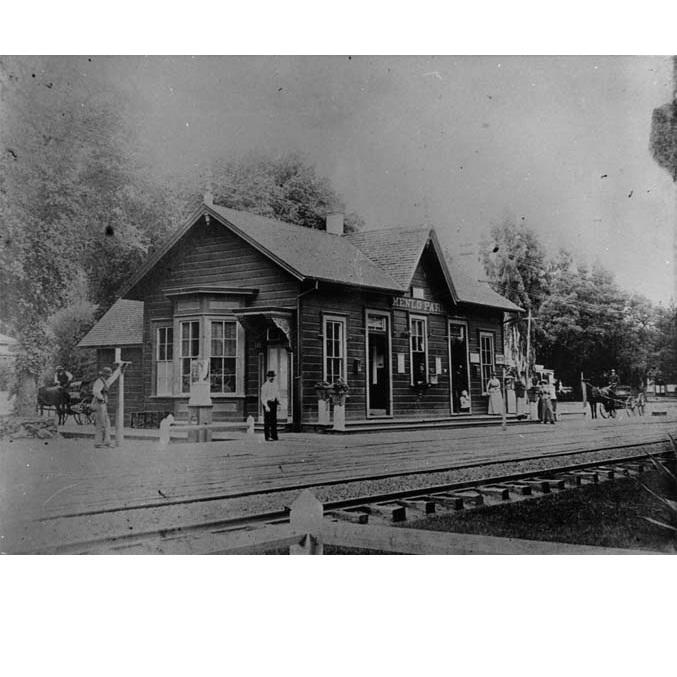Menlo Park’s depot is one of the oldest and prettiest on the Caltrain line. Built three years after the railroad between San Francisco and San Jose began operations, the Menlo Park Station served what was then one of the few large settlements along the Peninsula countryside.
Regular service to Menlo Park began October 18, 1863 when the first section of the line was completed to Mayfield. A small shed was provided for waiting passengers before the depot was constructed in 1867. The depot still stands today. Initially, the ladies waiting room was on the south end, and the general waiting room on the north, separated by the station master’s office. Quite plain originally, the building received the Victorian gingerbread treatment and sloped wooden awnings over each window and door when it was remodeled in 1890 in preparation for the opening of Stanford University. Brackets, fancy moldings, decorative “fish scales” and scallop cresting on the roofline gave the depot a look that was, if not feminine, homey.
Menlo Park’s depot was again enlarged during World War I, to serve the needs of troops going to and from the nearby Army Training Center, Camp Fremont. In 1917, the waiting room was extended 14 feet north and a men’s restroom and an open-sided shelter were added. World War II occasioned yet another remodeling to accommodate increased troop travel, and the segregated waiting rooms for men and women had become obsolete. In 1943, the Southern Pacific replaced the doors on each side of the station master’s bay with windows and built a double door into what had become the general waiting room on the north.
Before closing the depot in 1959, S.P. added walls to the shelter and then leased the building to the city, which subleased it to the chamber of commerce in 1960. The city, the chamber and the California Department of Transportation have made further improvements over the years. Caltrans invested $500,000 to rehabilitate the depot and baggage house (Historic Caltrain Sites Link Here) and added the clock tower, a bicycle corral, parking spaces and landscaping.
The chamber has taken care to keep the interior consistent with the depot’s historic character, recently upgrading some of the furnishings, replacing fluorescent lights with old-fashioned lamps and, in the board room, a clock has been installed that looks like something right out of the 1860s. Treasured photographs of the depot and other Menlo Park landmarks, as well as watercolors by local artists, are on display in the main office, the board room and in the office of Chamber President and CEO Fran Dehn. That office originally was a private room where Leland Stanford’s wife, Jane, could wait for the train -- by herself.
Fun Fact: Some believe Jane Stanford’s ghost can be seen pacing the windows of the historic depot.
